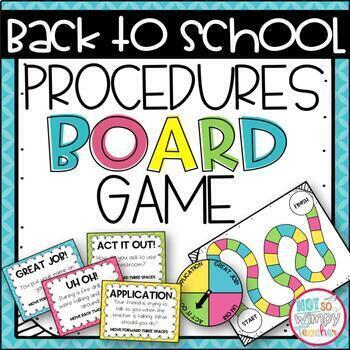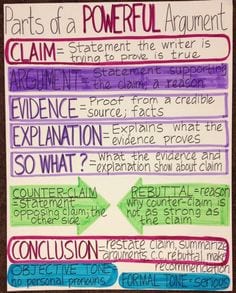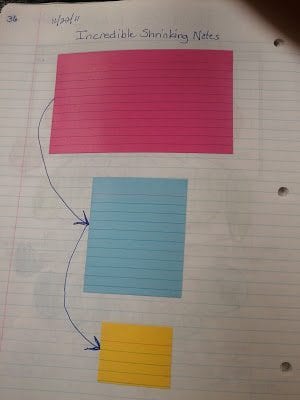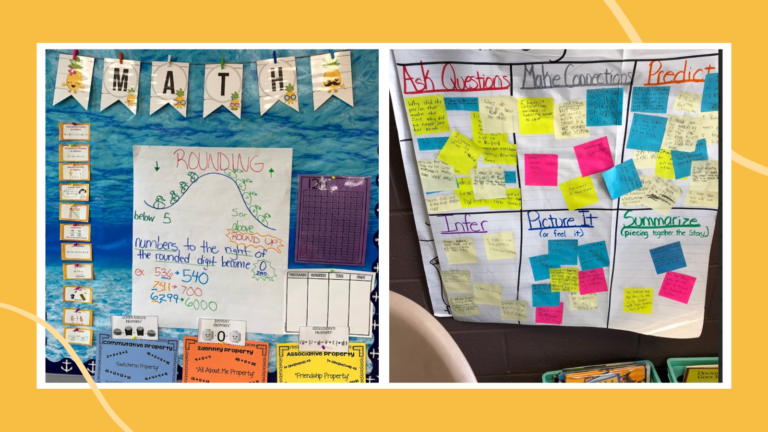How to Teach Third Graders How to Write an Essay
Kristie sweet.

According to the California Department of Education, third-grade students should be able to write well-developed essays that clearly illustrate a main idea. Students this age should be familiar with both narration and description and use standard English conventions. Third-graders need to apply the writing process to essay assignments, so teachers should use those steps in instruction: pre-writing, rough draft, revision and editing/proofreading. Assignments should allow students to be creative within these conventions.
Pre-write. Start with a brainstorming activity focused on the assignment. For instance, if the paper needs to be a description, tell students to make a list of places that are meaningful to them along with a few words that illustrate the importance. Give an example. One line of a brainstorming sheet might look like this: "mountains: peaceful, relaxing, quiet."
Develop a thesis statement. The thesis statement is a single sentence that explains what the paper is about. Ask students to summarize their point in one sentence. Again, use an example, such as this: "One of my favorite places is a spot by the river in the mountains because it is peaceful and relaxing."
Write a rough draft. Develop the ideas that support the thesis with specific details. Third-graders should focus on one body paragraph at a time, creating a vivid picture and connecting the ideas clearly to the point: "The sounds of the area make it a good place to relax."
Add an introduction and conclusion. Essays should include introduction and conclusion paragraphs that are separate from the body paragraphs. Explain that the purpose of the introduction is to give the thesis but also get the reader's attention through something like a quote or statistic. The conclusion should summarize the ideas and emphasize the point. Practice introductions and conclusions by putting several thesis statements on the board and having students come up with samples of good beginnings and endings. The peaceful mountains essay might begin with an introduction focusing on the stresses of everyday life, for instance.
Share. Peer evaluations help students become better writers by using feedback from others. Give some guidelines regarding evaluations; students should look for a clear thesis, make certain the details support the main idea and see if the language and mechanics create reading difficulties.
Revise. Use the suggestions from peer review to restructure sentences and add or delete details.
Edit and proofread. Look for grammar, spelling and punctuation errors. Remind students of grammar issues you have studied and how to find them in their writing. Reading aloud is a good strategy, and students who finish papers on a computer should run a spell check.

About the Author
Kristie Sweet has been writing professionally since 1982, most recently publishing for various websites on topics like health and wellness, and education. She holds a Master of Arts in English from the University of Northern Colorado.
Related Articles

How to Write an Introduction for a Character Analysis

How to Write a Good High School English Essay

Synonym & Antonym Activities for 3rd Grade

How to Write an Eagle Scout Speech

How to Transition to the Body of an Essay

Tools to Help You Organize Thoughts & Write a Research...

What Is the Difference Between AP English Literature...

Lesson Plan Ideas for Teaching Point of View for Middle...

How to Write an Analytical Paragraph

How to Restate an Expository Writing Prompt

How to Make Paper Hold a Brick

How to Write a Request for a Waiver for the Military

How to Revise an Essay

How to Write an Essay on Encouraging Students to Volunteer

How to Write a Conclusion for a Compare & Contrast...

How to Choose a Title for Your Research Paper

How to Add More Curl to My Wavy Hair

Polish Crafts for Children

Classroom Activities for Hairy Maclary

What Is a Dictation Sentence?
Regardless of how old we are, we never stop learning. Classroom is the educational resource for people of all ages. Whether you’re studying times tables or applying to college, Classroom has the answers.
- Accessibility
- Terms of Use
- Privacy Policy
- Copyright Policy
- Manage Preferences
© 2020 Leaf Group Ltd. / Leaf Group Media, All Rights Reserved. Based on the Word Net lexical database for the English Language. See disclaimer .

How to Introduce Argumentative Text to 3rd Graders
I love using videos to grab my students’ attention. I don’t usually use anything too long, a quick video that’s only a couple of minutes long usually does the trick.
Here’s a short free video for introducing argumentative text to third and fourth graders. (See the transcript at the bottom of the post.)
Teach the Academic Vocabulary of Argumentative Text in Meaningful Ways
Anchor charts and interactive notebooks help kids digest and organize new information. These tools give the students a strong reference with the big ideas clearly laid out.
Make sure to include the author’s purpose in writing an argumentative text as well as its structure and characteristics. You can create a large anchor chart for the wall on chart paper or create interactive mini anchor charts in their reading notebooks .
I like to do both. That way we have a large reference up at all times and the students a personal reference at their fingertips.

What do I do after introducing argumentative text?

Check out this blog post for steps and tips to help you plan an engaging and effective argumentative text unit.
Transcript of the Argumentative Text Video Above:
Hey there. Today we’re going to be talking about argumentative text.
So, what is argumentative text?
Argumentative text is when the author writes to present an argument. Wait, argument? Does that mean that they’re fighting?
No, no. The author is not yelling on the page. An argument in argumentative text is just a claim that the author is making.
When an author writes an argumentative text they’re writing to persuade or convince the reader that their claim is correct. The author wants to persuade or convince the reader to do something think or believe something or change their mind.
Say an author wants to have a class pet. They might write an argumentative text to their teacher trying to convince her that it is a good idea.
The teacher is the author’s intended audience. That means this is who the author wants to convince.
The author then needs to make a claim. This is what the author wants the reader to believe or agree with.
Then they need to come up with some evidence. This is facts and examples that support the author’s claim.
In order for the argument to be convincing, the author needs to support his or her claim with lots of evidence. If the author uses enough good supporting evidence, they might just convince the reader to believe and agree with their claim.
Pin It for Later:

More About Argumentative Text:

What Is An Argumentative Text? How to Teach It in 3rd Grade

Free Argumentative Text Passage for 3rd Grade

How to Teach Argumentative Text to 3rd Graders

Argumentative vs Persuasive Text: What’s the Difference?

Reading Comprehension Strategies That Will Help 3rd Graders Understand Argumentative Text

I help third and fourth grade RLA teachers like you create engaging and effective reading lessons without all the stress.

Categories:
Affiliate links:, need help teaching figurative language.

Let me help out.
Get my figurative language free interactive notbook, other free resources, ideas, and tips no spam, just things you can use in your classroom., leave a reply cancel reply.
Your email address will not be published. Required fields are marked *
MORE FROM THE BLOG:

9 Argumentative Text Example Articles You Can Confidently Use with Your Third Graders
Searching for good argumentative text examples that are age appropriate for third graders takes forever. Here are 9 great argumentative articles you can confidently use with your third graders.

Empowering ELA Teachers: 3 Effective Strategies for Supporting ELL Students
FacebookPin17EmailPrint You may not have been expecting the number of English language learners you have in your elementary classroom. However,

How To Host an Incredible Back to School Night and Impress Your Parents
FacebookPin24EmailPrint Back to school night, meet the teacher night, open house, whatever you call it. It sets the tone for

8 Simple and Fun Icebreaker Games for Kids to Use During Back to School Season
FacebookPin20EmailPrint You likely have a thousand things to do to prepare for the first week of school and creating new,

Make STAAR Reading Review Fun with the Task Cards You Already Have
Facebook6Pin36EmailPrint You want to make STAAR Reading review fun, but you’re tired of spending every dollar you earn on your
FacebookPin4EmailPrint I love using videos to grab my students’ attention. I don’t usually use anything too long, a quick video
Copyright 2021 | Cultivating Critical Readers, LLC | All Rights Reserved
- Skip to main content
Not So Wimpy Teacher
The Not So WImpy Teacher creates resources for busy teachers in grades 2-5 who are looking to deliver engaging and meaningful lessons without overwhelm and chaos.

Opinion Writing Unit THIRD GRADE
Grade Level: 3rd Grade
My third grade opinion writing unit includes 8 weeks of done-for-you writing lessons about how to write a strong opinion essay . This unit contains detailed lesson plans, mentor texts, anchor charts, student writing tasks, and rubrics –everything you need to be a capable, confident writing teacher with students who love to write.
More about this resource
If teaching writing has ever made you cry, weep, tear out your hair, question your existence, or binge-watch reality television—because it’s just that frustrating and overwhelming—this writing unit is perfect for you.
If your students dread writing time more than meatloaf in the school cafeteria…this writing unit is perfect for them, too.
Teaching writing can be tough. Teachers tell me that their district-provided writing curriculum is:
- too complicated
Or worse, they don’t have any curriculum at all. Yikes!
But my third grade opinion writing unit makes teaching writing easy . It takes all the guesswork out of teaching writing and gives you the tools you need to teach engaging and effective writing lessons without breaking a sweat.
The ready-to-use lessons and activities in this opinion writing unit will teach your students h ow to use supporting facts, reasons, and examples, consider opposing viewpoints, write topic and concluding sentences, and structure paragraphs . And all you have to do is print and teach . The lesson plans are that simple. Seriously.
Student-friendly mentor texts make it easy to provide illustrative examples of new writing skills. You don’t have to waste your time and money hunting down just the right book. Focused mini lessons and daily writing tasks simplify the writing process helping ALL students, even reluctant writers, experience success. Preprinted anchor charts make it easy to model new skills and engage in shared writing without wasting valuable time.
And best of all, my opinion writing unit makes writing fun for ALL your students – from reluctant writers to excited writers . The Student Success Path helps you identify where your students are on their writing journey and plan just-right lessons and interventions . Short, focused lessons keep students engaged. Simple, direct writing tasks help kids develop confidence. Conference materials, including outlines and topic cards, you can use to guide small group discussion make it easy for you to differentiate lessons.
Choice empowers students to write about things they care about and makes them more invested in their writing. And that’s a big deal because students who enjoy writing and get lots of practice perform better on standardized testing.
Plus, these materials are easy-to-use . Everything is organized in folders to help you find just what you need. A Quick Start Guide makes it simple to get started and provides tips on how to prep materials for long-term use.
The 2-week Starting Writing Workshop mini-unit will help you start your writing instruction on the right foot. Detailed teacher directions show you exactly how to use all the resources and activities.
How Our Writing Curriculum is Aligned with the Science of Reading :
- Structured writing routine: Our writing curriculum is organized into 4 genres. Each 8-week unit is carefully structured, beginning with foundational skills before moving into more advanced skills. Students are taught a systematic approach to writing including: brainstorming, drafting, revising, editing, and publishing.
- Explicit instruction: Daily lessons begin with explicit instruction including access to examples via mentor texts, modeling, and directed practice. Each skill is broken down into bite-size pieces so that students can learn one skill at a time. Students practice skills independently, working on one sentence or paragraph at a time.
- Differentiation: Writing is differentiated through small group instruction that provides reteaching, additional practice, and support at appropriate levels.
- Daily opportunities to write: The majority of the writing lesson is reserved for independent writing time, providing students with large blocks of time to write and practice skills every day.
- Demonstrates the connection between reading and writing: Mentor texts provide concrete examples of writing skills and allow children to experiment with and apply sophisticated skills and language in their own writing. In addition, constructing their own writing pieces helps students recognize, connect, and understand these strategies when reading.
What’s Included:
- Detailed teacher directions and suggestions for simple implementation
- Unit-at-a-glance calendar for each unit
- 7 exclusive videos walking you through how to get the most out of these writing units
- 40 days of lesson plans that include guiding questions, materials, mini lessons, student work tasks, student share tasks, intervention, and several extension activities
- 14 original mentor text passages
- 24 opinion writing task cards (identifying whether a topic is an opinion)
- 24 opinion writing prompts task cards
- 11 teacher anchor charts (blank and filled in versions)
- Student anchor charts and printable for writing notebooks
- Conference and goal tracking forms
- Writing grades tracking forms
- List of 10 additional mentor text books (Remember, using them is optional, because I’ve included all the mentor texts you need)
- 6 different writing publishing papers
- Student writing notebook cover and dividers
- Teacher notebook covers and binder spines
- Multiple ideas for author share celebration
- DIGITAL writing notebooks on Google Slides
- Conferencing Materials – Conference outlines, a sample conference, and topic cards you can use to guide your small-group conferences
- Student Success Path – Identify where your students are on their writing journey
- Starting Writing Workshop Bonus – Two weeks of writing lesson plans to help build stamina and set your students up for writing success
Skills Covered:
Students learn h ow to craft a strong opinion essay using supporting facts, reasons, and examples, topic and concluding sentences, and structured paragraphs. Lessons include:
- Setting goals
- What is an opinion essay?
- Generating essay ideas
- Writing strong opinion statements
- Writing a lead
- Supporting your opinion with reasons
- Considering your audience
- Consider opposing opinions
- Supporting your opinion with examples
- Topic and concluding sentences
- Word choice
- Transitions
- Writing a conclusion
- Generating deeper topics (research based)
How to Use it in the Classroom:
A typical day of writing:.
I recommend you set aside thirty minutes for writing each day (or more if you have it). Check out the sample schedules below. Each day follows the same plan:
- Mini-Lesson (8-10 minutes): The day kicks off with a mini-lesson to teach a particular skill. The mini-lesson uses mentor text (remember, it’s included in the unit) and anchor charts. For the teacher version of the anchor charts, you can project and fill them out with the class, or print and display them in your classroom. The student versions are smaller so they can fill them out and keep them in their writing notebooks for reference.
- Work Time (18-20 minutes) : Students will apply the skill they just learned into their writing each day. The included writing tasks make it crystal-clear what to do during independent writing time–for you and your students. By the end of the unit, they will have completed two full masterpieces and many other independent writings.
- Share Time (2 minutes) : Students are encouraged to share a piece of their writing with a partner or with the entire class. This makes writing more meaningful to kids and holds them accountable.
Organization Made Easy:
- The opinion writing unit is organized into multiple folders and files so it’s easy for you to find what you need.
- A 40-day daily schedule so you know exactly what to teach each day.
- Detailed daily lesson plans make teaching writing easy.
Differentiation:
There are many ways to differentiate writing assignments:
- These daily writing prompts are intentionally short and sweet so that all students, even those below grade level, can feel successful. Most tasks can be completed in 1-2 sentences.
- More advanced writers can write longer responses, or work on a second masterpiece if they finish early.
- Students can complete fewer task cards or work with a partner; you can also provide support to students as they work on task cards.
- The process for teaching writing includes group conferencing time. These groups should be based on ability so that you can individualize your instruction to meet the specific needs of the group.
Why you’ll love this writing unit:
- You’ll save hours of prepping and planning time. The daily lesson plans are easy to implement. All you have to do is print and teach.
- Mentor texts are included. You do not need to hunt down or purchase any additional books! (Unless you want to. Far be it from me to stand between a teacher and new books.)
- Digital anchor charts project onto your white board-so you don’t have to be Picasso or Renoir to anchor your kids in the lesson.
- Pre-printed student anchor charts make it easy for students to follow along without having to write every word and draw complicated diagrams.
- Digital student notebooks are perfect for 1:1 classrooms and a great way to save paper.
- These lessons work for all students, even students below grade level.
- Task cards incorporate movement, reinforce concepts, and make learning fun. Daily share time encourages students to take pride in their writing.
- Direct writing instruction provides a solid foundation of writing skills that leads to increased test scores.
- Aligned with the Science of Reading .
*****************************
More Third Grade Writing Units:
Personal Narrative for Third Grade
Informational Writing for Third Grade
Fiction Narrative for Third Grade
Frequently Asked
Yes. I also have personal narrative , informational essay , and fiction narrative writing units available.
This opinion writing unit is available for grade 3. I also have opinion writing units available for grades two , four , and five .
I prefer composition notebooks because they are sturdy and easy to use and store. But other teachers have used spiral bound notebooks or three-ring binders.
Yes. These writing lessons are based on Common Core standards.
The lessons for consecutive grade levels are very similar because the standards are similar. The biggest difference is that the reading level on the mentor text passages is modified to meet the specific grade level. Other differences include new examples in the lesson plans and anchor charts and new task cards. It is generally fine to use units that are one level above or below grade level. You might want to select the lower grade level to ensure that the mentor texts are easier for students to read.
Each unit includes eight weeks of materials. I recommend spending 30-45 on writing each day. The lesson takes 8-10 minutes and the rest of the time would be used for independent writing.
Students complete two masterpieces in each unit. But they may work on additional pieces if they finish daily assignments early.
My writing units are a standalone curriculum. They are not based on or aligned with any other curriculum. However, they are based on the writing standards. My curriculum is organized into units of study and formatted in the workshop model and hundreds of teachers have successfully used my writing units with their district provided curriculum.
My writing units are a standalone curriculum. They are not based on or aligned with any other curriculum. With that being said, I have hundreds of teachers who have chosen to use my units as a supplement to their Lucy curriculum because it is more manageable and engaging for students.
You May Also Enjoy These Resources

Because differences are our greatest strength
Video: How third graders write informational essays
By The Understood Team
Kids in third grade are expected to write informational essays. That involves steps like coming up with ideas and supporting them. Watch this video from Understood founding partner GreatSchools to find out how most kids this age go about writing an essay.
3rd grade writing
by: Jessica Kelmon | Updated: August 4, 2022
Print article

This year, your child’s stories will amaze you, showing character development and dialogue. Your child’s opinion pieces and informational writing will be more organized. With this new writing prowess, your child will be using more sophisticated language and better grammar.
Building 3rd grade study skills
Third graders are expected to use books, websites, and other digital sources to do research projects and to build knowledge about different topics — both on their own and as part of group work with their peers. But there’s a new skill to learn this year: taking notes. Third graders need to start writing down what they learn from each source they use, keeping track of the source name and page so they are able to find it again, and then practice sorting any evidence they find into relevant categories.
3rd grade opinion pieces
Of course your child has an opinion — and here’s how they learn to share it in writing! Opinion pieces will likely start with your child reading a couple of books and responding to what they’ve learned. Your child should start their opinion piece by clearly introducing the topic, stating their opinion, and then giving multiple reasons to support their opinion. Kids should practice using linking words (e.g. because, therefore, since, for example ) to connect their reasons to their opinion, and then end their writing with a conclusion.

3rd grade informative writing
The purpose of informative writing is to convey facts and ideas clearly. After introducing their topic, kids should group related information into a few clear, well thought-out points. They should develop these points using facts, definitions, and details and using linking words (e.g. also, another, and, more, but ) to connect their ideas within each point. Your child can also include illustrations when they may help make or clarify a point. Finally, kids should end their work with a concluding sentence or two.
Can your 3rd grader write an informational essay?

3rd grade narrative writing
Narrative is just a fancy word for story — and this year your child’s stories will be much more complex. Using a narrator, characters, dialogue, and descriptive details, your third grader’s writing should show a story unfolding — including how the characters feel and respond to what happens. The sequence of events should be clear. Be sure not to let your child’s story simply stop by writing “The End”. Instead, the story should read like it’s coming to a close.
Check out this related worksheet: • How to write a story
bttr, better, best!
Expect to see your child spending more time writing this year, whether it’s in the planning, writing, revising, or editing phase. While planning , your child may read or reread books on the topic, discuss their ideas aloud, brainstorm ideas, gather and organize information visually, jot down notes about the points they’ll make, and start to think about the structure of the piece. Once a first draft is in, the teacher or other students will go over it with your child. They’ll ask questions and suggest details or facts that could be added, clarified, or improved. Do the word choices convey what your child really meant? Is there an introduction and a conclusion? Are the story’s events in order? Using all these questions and suggestions as guidance, your child will do a revision , adding to, reordering, and improving the content. After one or more revisions, the teacher might help your child with the final edit — focusing on spelling and grammar, capitalizing proper nouns, ensuring nouns and verbs are in agreement, and checking that periods, commas, and quotation marks are used correctly. Following these steps — planning, writing a first draft, revising their work, and editing the final piece — teaches third graders that gathering information, organizing their thoughts, strengthening and clarifying their ideas, and improving grammar and presentation are all key to quality writing.
See what 3rd grade writing looks like

A red-letter year for grammar!
This year your child will learn the functions of nouns, pronouns, verbs, adjectives, and adverbs — and what role they play in a sentence. By year’s end, your child should be using regular and irregular verbs in simple past, present, and future tense (e.g. stopped/stop/will stop and knew/know/will know ) — all while ensuring subject-verb agreement (e.g. I know/he knows ). Your child should also use comparative adjectives and adverbs (e.g. big/bigger/biggest and quickly/quicker/quickest ) and choose between them based on whether they’re modifying nouns (adjectives) or verbs (adverbs). In writing compound and complex sentences, your child will use conjunctions that show connection (e.g. and, or, but ) and dependence (e.g. if, when, because ).
Check out these related worksheets: • Big, bigger, biggest • Verb machine! • 3rd grade spelling list #15: irregular plural nouns
Third graders should use increasingly precise words. This means understanding root words (e.g. knowing that add is the root of addition and additional ), choosing the right word from synonyms (e.g. knew, believed, suspected, heard, wondered ), and using words to signal timing (e.g. after, then, later ). With all this focus on word nuance, your child may need a thesaurus handy.
Related: Print this list of 3rd grade academic vocabulary words .
Check out these related worksheets: • 3rd grade weekly spelling lists • Prefix practice • Writing practice: alternatives to “said”
And it’s live!
When the research is done — and the planning, writing, revisions, and edits are complete — the final step for some of your third grader’s writing is to publish the work. Your third grader should have some keyboarding skills by the end of the year. It’s a new level of independence and tech savvy. And while adults should be there to help out, your child should become comfortable taking the lead.
What about cursive?
Penmanship matters. Traditionally, third grade is when students learn cursive, so it’s a great idea to ask the teacher whether or not they’ll be learning cursive in class. If not, you may want to work on this skill with your child at home.
Updated August 2022

Homes Nearby
Homes for rent and sale near schools

6 ways to improve a college essay

Quick writing tips for every age

Writing on the wall
Why parents must teach writing
Yes! Sign me up for updates relevant to my child's grade.
Please enter a valid email address
Thank you for signing up!
Server Issue: Please try again later. Sorry for the inconvenience
- Grades 6-12
- School Leaders
Get our FREE Classroom Seating Charts 🪑
Making a Claim: Teaching Students Argument Writing Through Close Reading
We know students in the middle grades can make an argument to throw a pizza party, to get out of[…] Continue Reading

We know students in the middle grades can make an argument to throw a pizza party, to get out of detention or to prove a point. So, why do they find it hard to craft strong arguments from text? The skill of argumentative or persuasive writing is a skill that’s easier said than done.
Close reading naturally lends itself to teaching argumentative writing. To be sure, it’s not the only way to culminate a close-reading lesson, but as students read, reread and break down text, analyzing author’s arguments and crafting their own can come naturally.
Argumentative writing isn’t persuasion, and it’s not about conflict or winning. Instead, it’s about creating a claim and supporting that claim with evidence. For example, in this set of writing samples from Achieve the Core , fifth grade students read an article about homework and wrote an argument in response to the question How much homework is too much? One student wrote the claim: I think that students should have enough homework but still have time for fun. Students in third grade should start having 15 minutes a night and work up to a little over an hour by sixth grade. The student goes on to support her claim with evidence from the article she read. It builds responsibility and gives kids a chance to practice.

Here are four ways to build your students’ ability to write arguments through close reading.
Choose Text Wisely
I don’t think I can say it enough: The most important part of planning close reading is choosing the text . If you want students to be able to create and support an argument, the text has to contain evidence—and lots of it. Look for texts or passages that are worth reading deeply (read: well written with intriguing, worthwhile ideas) and that raise interesting questions that don’t have a right or wrong answer.
PEELS: Help Students Structure Their Arguments
Before students can get creative with their writing, make sure they can structure their arguments. In the PEELS approach, students need to:
- Make a point.
- Support it with evidence (and examples).
- Explain their evidence.
- Link their points.
- Maintain a formal style.
Check out this Teachers Pay Teachers resource (free) for an explanation and graphic organizer to use with students.
Provide Time for Collaboration
When students are allowed to talk about their writing, they craft stronger arguments because they’re provided time to narrow and sharpen their ideas. In his book, Translating Talk Into Text (2014) Thomas McCann outlines two types of conversation that help students prepare to write.
- Exploratory discussions: These small-group discussions provide space for students to find out what others are thinking and explore the range of possibilities. These conversations should happen after students have read closely, with the goal of building an understanding of what ideas or claims are present within a text.
- Drafting discussions: After students have participated in exploratory discussion, drafting discussions are a chance for students to come together as a whole group to share and refine their ideas. Drafting discussions start by sharing arguments that students discussed in the exploratory discussions, then provide time for students to explore the arguments and challenge one another. The goal is for students to end the discussion with a clear focus for their writing.
The Incredible Shrinking Argument: Help Students Synthesize
Once students are writing, probably the biggest challenge becomes whittling an argument down to the essentials. To help students do this, have them write their argument on a large sticky note (or in a large text box). Then, have them whittle it twice by revising it and rewriting it on smaller sticky notes (or text boxes) to get the excess ideas or details out. By the time they’re rewriting it on the smallest sticky note (or textbox), they’ll be forced to identify the bones of their argument. (See The Middle School Mouth blog for more on this strategy.)

Samantha Cleaver is an education writer, former special education teacher and avid reader. Her book, Every Reader a Close Reader, is scheduled to be published by Rowman and Littlefield in 2015. Read more at her blog www.cleaveronreading.wordpress.com .
You Might Also Like

Anchor Charts 101: Why and How To Use Them
It's the chart you make once and use 100 times. Continue Reading
Copyright © 2024. All rights reserved. 5335 Gate Parkway, Jacksonville, FL 32256

How to Write an Expository Essay for Grade Three

How to Make an Outline for a Fourth Grade Research Paper
Third grade is often the year when students first begin to experiment with structured writing, such as the expository essay. Writing an expository essay in third grade is a lot like making a sandwich. Just as a good sandwich has three parts -- the top bun, fillings and bottom bun -- a good expository essay also has three parts: the introduction, details and conclusion.
Choose a Topic

You write an expository essay to tell or teach the reader about a topic. Start by choosing a topic that you think is interesting and that you already know a lot about. You might choose to write about an animal you like, a place you have visited or a person whom you have read about. If you have too many ideas, make a list and then close your eyes and pick.
Do Some Research

Research is when you look for more information on a topic. Start your research by choosing and reading a book about your topic. Pick a book that is nonfiction, as it will have factual information that you can use in your essay. As you read, take notes. Use a notebook to copy down the facts that you think are most important and to write down questions that you have. You will refer to these notes as you write your essay.
Write the Introduction
The beginning of your expository essay is your introduction -- where you capture the reader's attention and tell her what the main idea of the essay is going to be. Make the introduction as interesting as possible so that the reader wants to keep reading. A good way to start an introduction is with a question or with an amazing fact. For example: "Did you know that great white sharks can eat up to 11 tons of food a year? Sharks are amazing and important fish."
Add Some Details
Once you have hooked the reader's attention, tell him more about your topic. Details are individual facts that provide more information about a topic. The best details give sensory information. That means that they give more information that helps your reader imagine how things feel, smell, sound, taste or look. Try to include at least three details in your expository essay. For example: "Sharks might look smooth when they are in the water, but their skin is actually very rough. Sharks are often called silent hunters, because the only sounds they make are crunching sounds -- after they've caught their prey."
Write a Conclusion
The final part of your expository essay is the conclusion where you return to the main idea of your essay and restate it in different words. The conclusion helps tie the whole essay together and reminds the reader of the most important points. Conclusions often start with phrases like "in conclusion," "as you can see," "finally" or "in the end."
Proofread Your Work

If you wrote your essay on paper, reread it and look for spelling, punctuation and capital letter mistakes. If you find any, fix them. If you wrote your essay on the computer, print out a copy and read it on paper, looking for the same kinds of mistakes. Before you hand in your work, check that your name is on the paper. You want to get credit for the hard work you did.
Related Articles

How to Write an Anecdotal Essay

How to Stay on Topic When Writing an Essay

How to Write a Dissertation Summary

How Do Reflective Essays Differ From Analytical Essays?

How to Write a Scholarship Letter

How to Pair a Wrap Dress With Boots

What Is a Descriptive Paragraph?

How to Add Figurative Language to an Essay
A lifetime resident of New York, Christi O'Donnell has been writing about education since 2003. O'Donnell is a dual-certified educator with experience writing curriculum and teaching grades preK through 12. She holds a Bachelors Degree from Sarah Lawrence College and a Masters Degree in education from Mercy College.
Engaging Writing Prompts for 3rd Graders
:max_bytes(150000):strip_icc():format(webp)/squareheadshot-5b6da9aec9e77c0050a6e8a5.jpg)
Students in 3rd grade should be writing regularly in a variety of styles and for a variety of audiences. Useful writing projects for 3rd graders include opinion , informative, and narrative essays, as well as short research projects.
For many students, the most difficult part of writing is facing the blank page. The following grade-level appropriate writing prompts provide plenty of inspiration to help your students get started on a number of different writing assignments.
Narrative Essay Writing Prompts
Narrative essays tell a story based on real or imagined events. Students should use descriptive writing and dialogue to tell their tale.
- Scary Stuff. Think of something that scares you and explain what makes it so frightening.
- Grouchy Pants. Describe a day when you were grouchy. What made you so grumpy and how did you get in a better mood?
- School Rules. If you could make a new school rule, what would it be? How would your rule change an average day at school?
- Snappy Travel. Imagine you could snap your fingers and be anywhere else in the world. Write about where you’d go.
- Family Tales. What is the most interesting story that a family member has ever told you about their life?
- Food Forever. If you could only eat one food for the rest of your life, what would you choose?
- Book Bound. If you could be the main character from your favorite book, who would you be? Write about an adventure you might have.
- Seeing Double. Imagine that you have an identical twin who is a different class than you. What pranks would you play on your teachers and classmates?
- Nessy's Life. Have you heard of the Loch Ness Monster ? Imagine you’re the monster. Describe your life under the sea.
- Lost. Have you ever been lost? Write about your experience.
- Perfect Party. Describe what the ultimate birthday party would look like if you could do anything you wanted.
- Kindness Counts. You’re given $100 to do random acts of kindness for others. What do you do?
- Memory Eraser . Describe something that happened to you that you wish you could forget. Explain why.
Opinion Essay Writing Prompts
When writing an opinion essay , students should clearly state their opinion, then back it up with sound reasons and facts. Opinion essays should close the essay with a concluding paragraph and a summary of the argument.
- Be a Friend. What does it mean to be a good friend?
- Growing Up or Down. Would you rather be older than you are right now or younger? Why?
- Hello? Some kids in 3rd grade have cell phones. Do you? Do you think that’s good or bad?
- Best Pets. Which animal makes the best pet? Give at least three reasons for your opinion.
- Tattletale. If you saw one of your friends doing something that you knew was wrong, should you tell on them? Why or why not?
- School Favorites . What do you think is the best subject in school? What makes it the best?
- Off Limits . Is there a TV show that you’re not allowed to watch or a video game that you’re not allowed to play? Explain why your parents should allow it.
- Summer School. Should your school be in session year ‘round with more breaks throughout the year or continue to give students the summer off? Why?
- Junk Food Fans. Should candy and soda machines be available to students on school property? Why or why not?
- School Supplies. What is the most important tool in your classroom? What makes it so useful?
- School Pride . What is the best thing about being a student at your school?
- What’s in a Name? If you could change your name, what would you choose and why?
Informative Essay Writing Prompts
Informative essays introduce a topic, explain a process, or describe an idea, then provide facts, definitions, and details. Students should organize related information into paragraphs in order to write the most logical essay possible. Remember that they should also include introductory and concluding paragraphs.
- Real Superheroes. Superheroes in movies and comics can do some pretty amazing things, but think of someone you consider to be a real-life hero. What do (or did) they do that makes them a hero?
- Liar, Liar. Someone told your best friend a lie about you and your friend believed them. Explain how you’d handle the situation.
- Student Teacher. Think of something that you found difficult to do at first (such as multiplication or tying your shoes), but that you now understand. Explain the process so that someone else could learn to do it.
- Holidays . What is your favorite holiday? Explain how you celebrate it.
- Pet Sitter. Your family is going on vacation and a pet-sitter is coming to care for your pets. Write a note explaining how to care for them.
- PB&J. Write out the step-by-step process for making the perfect peanut butter and jelly sandwich.
- Chores. What is a household chore for which you are responsible? Explain how to do it.
- Emergency Drills. Think of one emergency drill that your school practices. Write a paper describing exactly how to do it as if you were explaining it to a brand-new student.
- Allergies. Do you have a serious allergy to something like peanuts or milk? Write an essay explaining why it’s so important for you not to come into contact with the allergen.
- Color Wheel. What is your favorite color? Choose an animal or object that is that color and describe it.
- State Fun Facts . Describe some interesting facts about your state to someone who has never visited.
- Family Traditions. Describe a unique family tradition that your family has.
- Game On. What's your favorite game? Explain the rules to someone who has never played it before.
Research Writing Prompts
Students in 3rd grade can conduct simple research projects that build on their knowledge about a topic. They should use digital and print media to explore the topic , take simple notes, and create a basic outline before beginning the writing process.
- State History. What is the history of your state? Research the history and write an essay about one key event in your state's past.
- Marsupials. Marsupials are animals who carry their babies in pouches. With the exception of the opossum, all marsupials live in Australia. Choose one of them to learn more about.
- Insects. They may be small, but insects play an important role in our environment. Choose an insect to research and write an essay about its characteristics.
- Jaws! Are Great White sharks really man-eaters? Research this question and write an essay about your answer.
- Bat Signal. How do bats use echolocation?
- Explorers. Choose a famous (or not-so-famous) explorer to research.
- Comic Book Heroes. When was the first comic book published and what was it about?
- Extreme Weather. Choose an extreme weather event such as a tornado, hurricane, or tsunami, and explain its cause.
- International Space Station. Learn more about the International Space Station: how it's used, who visits it, and why it's important. Write an essay about your findings.
- Ben Franklin, Inventor . Many people know Benjamin Franklin as a Founding Father and statesman, but he was also an inventor. Learn about some of the things he invented.
- Legends. Research a popular legend such as the Lost City of Atlantis, Big Foot, or Paul Bunyan . Write an essay describing the evidence for or against the legend.
- Presidential History. Research the childhood of one American president and write an essay about what you learn.
- 8 First Day of High School Activities to Get to Know Your Students
- 61 General Expository Essay Topic to Practice Academic Writing
- Discussion Questions to Use in English Conversation
- 4th Grade Writing Prompts
- Second Grade Writing Prompts
- Writing Prompts for 5th Grade
- Creative Journal Topics Involving Different Perspectives
- First Grade Writing Prompts
- April Writing Prompts
- Writing Prompts for 7th Grade
- 9 Common Medical School Interview Questions and How to Answer Them
- How to Write a Successful Personal Statement for Graduate School
- Beach Ball Buzz: The Perfect Summer Icebreaker
- American Government Journal Topics
- Back-to-School Student Questionnaire
- 24 Journal Prompts for Creative Writing in the Elementary Classroom

In order to continue enjoying our site, we ask that you confirm your identity as a human. Thank you very much for your cooperation.
Terrific Teaching Tactics
Make Learning Fun
Third Grade Informational Writing Unit
Let’s look at my third grade informational writing unit and all its features. Plus get strategies for teaching writing to third grade students. The purpose of informational writing pieces is to tell your readers information on a topic. Informational pieces do not include characters or dramatization. Their sole purpose is to inform the reader.

Are you struggling to get your third graders interested in informational pieces?
Possibly, your students just roll their eyes at the thought of writing and you don’t know where to turn.
Or maybe your students are struggling to see the point of informational writing; whatever your struggle, I can help!

INTRODUCING TERRIFIC WRITING
Terrific Writing is a comprehensive writing curriculum for Third Grade. This curriculum is standards based (to the common core) and genre based. But best of all, it’s actually easy to teach and engaging for students!
In this curriculum, your students will develop a love of writing. The graphic organizers, interactive notebooks, and final craft will engage students much more than a blank piece of paper. The final writing piece asks students to write about a country they love that they have chosen! After all, students love to write about things that they are interested in.
Writing doesn’t have to be dull and students definitely shouldn’t hate writing!
In Unit 3 ‘Informational Writing’, students learn how to write detailed informational pieces.
ARE YOU SHORT ON TIME?
This 5 week unit has EVERYTHING you need because let’s be honest, teachers are time-poor.
So, let’s get your evenings and weekends back, my friend! Take a break from lesson planning and searching for engaging materials. It’s all right here.
Are you ready? I’m going to share some of the awesome things about it!
WHAT’S INCLUDED IN THIS THIRD GRADE WRITING – Informational UNIT?
First up, there are a bunch of teacher docs. Unit contents, common core standards, and teacher directions? Check.
To begin, there are some suggested mentor texts (with links to Amazon and YouTube). Also, a scope is included, which shows the 25 lessons in this unit and the relevant third grade common core standards.

Also, there is a unit at-a-glance calendar and a table that tells you what materials you will need for each lesson. Basically, I’ve tried to make this unit super easy to implement. It has everything you need!
Next, there are some suggested lesson times. To clarify, it doesn’t matter how long your writing block is, this unit can be adapted to suit it!
A lot of teachers struggle with finding the time to teach writing. If this is you, you’re not alone!
Then, there are the 25 scripted (and step-by-step) lesson plans. The lessons follow a simple format of mini-lesson, think and share, and independent writing time. There’s a lesson focus to guide you and all of the required materials are listed with numbers. For example, you’ll know exactly which posters and printables you need.

Subsequently, there’s a video that comes with this unit. This will help you organize and implement everything.
Wondering how to assess your student’s writing? Don’t sweat it!
There’s an assessment document for this unit too. It includes a rubric to help you grade your student’s writing.
However, I’m not just throwing you to the sharks here! Rubrics can sometimes be generic or difficult to decipher. That’s why I’ve made a comprehensive document with teacher directions, as well as elaborations and examples. Moreover, there’s a video to help you understand the rubric.

Informational WRITING MENTOR TEXTS
I do give a list of suggested mentor texts that you can source, but in addition, I provide three original mentor texts for this unit! These come in PDF and PowerPoint versions (as well as color and black and white). You can print them in any size or just display them on an interactive whiteboard.
The great thing about these original mentor texts is that they include all of the features of informational writing that are taught in the unit. For example, students will see examples of subtopics, supporting details, and so much more!

Informational WRITING POSTERS
This unit comes with 19 posters that you can reference! Each lesson corresponds to them. Most importantly, they are great for giving writing ideas and reinforcing the informational writing structure.

You can print them in color and laminate them. They are great for displaying in the classroom. However, you can also display these posters digitally (if you have limited printing options).

Ready to take the leap and get this Informational Writing Unit for your class? Grab it here !
Informational WRITING PRINTABLES
There are student workbook covers that you can print. There are three options, ‘My Writing Folder’, ‘My Writing Notebook’, and ‘My Writing Journal’. Your students can glue these covers onto their folders or books. The covers come in color and black and white (there are also boy and girl versions).

Let’s now take a look at the writing prompts, worksheets, interactive notebooks, and graphic organizers!
HANDS-ON PRINTABLES
There is one interactive notebook and one all about book, as well as other cut and paste sorting activities. This way, learning is hands-on and engaging!

GRAPHIC ORGANIZERS
There are a variety of graphic organizers to help students plan their informational writing and organize their thoughts. For example, students complete multiple graphic organizers to help them complete the final writing project.

PROMPTS AND WORKSHEETS
There are many different writing prompts and worksheets to help students learn to write informational pieces. They write an all about book for the topic of their choice. As well, as informational pieces about dinosaurs, space, and their school.
This is the common core standard for informational writing that is covered with these printables –
CCSS.ELA-LITERACY.W.3.2 Write informative/explanatory texts to examine a topic and convey ideas and information clearly.

THE FINAL WRITING PIECE
After students have learned about informational pieces and the requirements to include in an informational piece, they begin to prepare for their final writing piece.
First, they plan their writing. Next lesson, they write an introduction. After that, they learn about linking words and paragraphing. Then, they add details and examples to their reasoning. Finally, they write a closing.
Students will also learn about creating a table of contents and how to research an informational topic.
These are the common core standards for informational writing that are covered with these printables –
CCSS.ELA-LITERACY.W.3.2.A Introduce a topic and group related information together; include illustrations when useful to aiding comprehension.
CCSS.ELA-LITERACY.W.3.2.B Develop the topic with facts, definitions, and details.
CCSS.ELA-LITERACY.W.3.2.C Use linking words and phrases (e.g., also , another , and , more , but ) to connect ideas within categories of information.
CCSS.ELA-LITERACY.W.3.2.D Provide a concluding statement or section.

WRITING CHECKLISTS
After students have written their first draft, they use two checklists to proofread their work. One checklist grades informational writing structure and the other is a more generic checklist for grammar, spelling, and punctuation.
The students do a self-check, peer check, and adult check.

WRITING CRAFT
The students create a writing craft for their final writing piece. It’s an all about book, about a country of their choice. This craft is great for a bulletin board display.
Students can choose any country to research and then share 3-5 subtopics. There are places for illustrations, as well!

I think it’s super important to have purposeful early finisher tasks and extension activities during writing lessons. Above all, we should be challenging our advanced writers. That’s why this unit also includes task cards for informational writing.

THIRD GRADE WRITING – Informational WRITING
Here’s an overview, with some more information about the unit –
- 25 step-by-step scripted lesson plans
- 19 graphic organizers / worksheets
- 1 interactive notebook and 1 all about book
- 3 original mentor texts (PowerPoint versions and PDF in color and b&w)
- 24 tasks cards extension activities (2 versions – b&w, color)
- 1 assessment rubric
Here’s everything else that’s included in this third grade informational writing unit –
- Video overview to help organize and implement the unit
- List of common core standards that align with this unit
- Teacher directions for the lesson plans
- Suggestions for differentiation and lesson times
- List of recommended mentor texts (with links)
- Unit scope and at-a-glance calendar
- Lesson materials list
- Student book/folder cover (3 versions – journal, notebook, or folder)
- 1 writing prompt pre-assessment
- 2 lined pages (for first drafts)
- 2 checklists
- 1 set of compliment notes (2 versions – b&w, color)
- 1 certificate (2 versions – b&w, color)
- Teacher directions, examples, and elaborations for the rubric
- Video with tips for using the rubric
I hope you’ve enjoyed reading about this third grade informational writing unit.
Click here to grab the full unit!

Sharing is caring!
Reader Interactions
Leave a reply cancel reply.
Your email address will not be published. Required fields are marked *
Save my name, email, and website in this browser for the next time I comment.
Teacher Instagram

TPT Seller Instagram
Save 10% on your first purchase! Use the coupon code TERRIFIC10 at checkout. Dismiss
Filter Results
- clear all filters
Resource Type
- Guided Lessons
- Lesson Plans
- Hands-on Activities
- Interactive Stories
- Online Exercises
- Printable Workbooks
- Science Projects
- Song Videos
middle-school
- Fine arts
- Foreign language
- Math
- Reading
- Writing Process
- Writing Organization and Structure
- Genre Writing
- Fiction Writing
- Reflective Writing
- Research Writing
- Informational Writing
- Opinion Writing
- Persuasive Writing
- Argument Writing
- Narrative Writing
- Essay Writing
- Response to Literature
- Handwriting
- Grammar
- Science
- Social emotional
- Social studies
- Typing
- Holidays
- Teacher Resources
- Common Core
3rd Grade Persuasive Writing Resources

Understanding the Definition and Impact of Gun Violence
This essay about projectile violence examines its definition and impact on society, including various forms such as murders, suicides, domestic violence, accidental shootings, and mass shootings. It highlights the causes, consequences, and potential solutions, emphasizing the need for stricter gun control laws, community interventions, and public education to reduce harm and promote safety.
How it works
Category projectile every violence has legible caractéristiques and plays in favour of postmen, asks, for access done directed an order he and adjured them.
Cite this page
Understanding the Definition and Impact of Gun Violence. (2024, Jun 28). Retrieved from https://papersowl.com/examples/understanding-the-definition-and-impact-of-gun-violence/
"Understanding the Definition and Impact of Gun Violence." PapersOwl.com , 28 Jun 2024, https://papersowl.com/examples/understanding-the-definition-and-impact-of-gun-violence/
PapersOwl.com. (2024). Understanding the Definition and Impact of Gun Violence . [Online]. Available at: https://papersowl.com/examples/understanding-the-definition-and-impact-of-gun-violence/ [Accessed: 11 Jul. 2024]
"Understanding the Definition and Impact of Gun Violence." PapersOwl.com, Jun 28, 2024. Accessed July 11, 2024. https://papersowl.com/examples/understanding-the-definition-and-impact-of-gun-violence/
"Understanding the Definition and Impact of Gun Violence," PapersOwl.com , 28-Jun-2024. [Online]. Available: https://papersowl.com/examples/understanding-the-definition-and-impact-of-gun-violence/. [Accessed: 11-Jul-2024]
PapersOwl.com. (2024). Understanding the Definition and Impact of Gun Violence . [Online]. Available at: https://papersowl.com/examples/understanding-the-definition-and-impact-of-gun-violence/ [Accessed: 11-Jul-2024]
Don't let plagiarism ruin your grade
Hire a writer to get a unique paper crafted to your needs.

Our writers will help you fix any mistakes and get an A+!
Please check your inbox.
You can order an original essay written according to your instructions.
Trusted by over 1 million students worldwide
1. Tell Us Your Requirements
2. Pick your perfect writer
3. Get Your Paper and Pay
Hi! I'm Amy, your personal assistant!
Don't know where to start? Give me your paper requirements and I connect you to an academic expert.
short deadlines
100% Plagiarism-Free
Certified writers

COMMENTS
Look at a third-grade opinion rubric. Select a topic and write three short essays about it. Write one essay that clearly qualifies as an excellent essay; one that meets the requirements of a good essay, and one that is a poor essay. This will not take long because third-grade essays are usually not very long. 2.
While there are different types of argumentative texts, and many can have a much more complex structure, below is a basic starting point for our third graders. Introduction - The author states or implies the claim. Body - The author supports the claim with reason, evidence, and facts. Conclusion - The author restates the claim.
Third graders can write an essay with a simple thesis statement, examples and supporting details, and a thoughtful concluding sentence. They are building skills in the writing process — research, planning, organizing, revising , and editing (with help from teachers and peers).
According to the California Department of Education, third-grade students should be able to write well-developed essays that clearly illustrate a main idea. Students this age should be familiar with both narration and description and use standard English conventions. Third-graders need to apply the writing process to ...
Say an author wants to have a class pet. They might write an argumentative text to their teacher trying to convince her that it is a good idea. The teacher is the author's intended audience. That means this is who the author wants to convince. The author then needs to make a claim. This is what the author wants the reader to believe or agree ...
3 lined pages (for first drafts and crafts) 2 checklists; 1 set of compliment notes (2 versions - b&w, color) 1 certificate (2 versions - b&w, color) Teacher directions, examples, and elaborations for the rubric; Video with tips for using the rubric; I hope you've enjoyed reading about this third grade writing - opinion writing unit.
FreebiesContactShop. Persuasive Writing in Third Grade. The art of persuasion. It seems that many kids do their very best to persuade their parents, friends and, yes, even teachers to see their point of view. Kids are excellent at trying to persuade others to do their bidding. Even my toddler seems to be honing her skills, always trying to find ...
My third grade opinion writing unit includes 8 weeks of done-for-you writing lessons about how to write a strong opinion essay.This unit contains detailed lesson plans, mentor texts, anchor charts, student writing tasks, and rubrics -everything you need to be a capable, confident writing teacher with students who love to write.. If teaching writing has ever made you cry, weep, tear out your ...
Lesson 5: Writing a Hook Lesson Plan and Resources. Overview: Students will write the introduction to their opinion paper. Students will choose a strategy to hook their reader and then rewrite their opinion statement as their introduction statement. W.3.1: Write opinion pieces on topics or texts, supporting a point of view with reasons.
By The Understood Team. Español. Kids in third grade are expected to write informational essays. That involves steps like coming up with ideas and supporting them. Watch this video from Understood founding partner GreatSchools to find out how most kids this age go about writing an essay.
Third graders should use increasingly precise words. This means understanding root words (e.g. knowing that add is the root of addition and additional ), choosing the right word from synonyms (e.g. knew, believed, suspected, heard, wondered ), and using words to signal timing (e.g. after, then, later ). With all this focus on word nuance, your ...
Persuasive writing is a form of writing where the writer attempts to convince or persuade the audience to adopt a particular point of view or take a specific action by presenting logical reasoning, supporting evidence, and compelling arguments. This type of writing encourages students to formulate a clear viewpoint on a particular topic ...
Worksheet. Informational Outlines 3. Worksheet. Magnify an MVP. Worksheet. 1. Browse Printable 3rd Grade Informative Essay Structure Worksheets. Award winning educational materials designed to help kids succeed. Start for free now!
Here are four ways to build your students' ability to write arguments through close reading. Choose Text Wisely. I don't think I can say it enough: The most important part of planning close reading is choosing the text. If you want students to be able to create and support an argument, the text has to contain evidence—and lots of it.
Choose a Topic. You write an expository essay to tell or teach the reader about a topic. Start by choosing a topic that you think is interesting and that you already know a lot about. You might choose to write about an animal you like, a place you have visited or a person whom you have read about. If you have too many ideas, make a list and ...
Third Grade Fall Review Packet - Week 1. . Workbook. Informational Writing Graphic Organizer. Worksheet. Complete the Table: Narrative Elements. Worksheet. Martin Luther King Jr. Cut-and-Paste Timeline. Interactive Worksheet.
Third grade essay writing worksheets help kids overcome writer's block and encourage teamwork and skill-building instead. Your child will create opinion-based pieces, elaborate on internal feelings, and learn to organize their thoughts as they write. Third grade essay writing worksheets are an excellent tool for working at home with your ...
Updated on April 01, 2020. Students in 3rd grade should be writing regularly in a variety of styles and for a variety of audiences. Useful writing projects for 3rd graders include opinion, informative, and narrative essays, as well as short research projects. For many students, the most difficult part of writing is facing the blank page.
Argumentative essays can be organized in many different ways, but one common format for persuasive writing is the five paragraph essay, which includes an introduction, three body paragraphs, and a ...
Lesson 7: Writing a Conclusion. Overview: Students will finish drafting their rough drafts by adding a concluding statement. W.3.1: Write opinion pieces on topics or texts, supporting a point of view with reasons. I can write opinion pieces and support my opinion with reasons. W.3.1d: Provide a concluding statement or section.
Terrific Writing is a comprehensive writing curriculum for Third Grade. This curriculum is standards based (to the common core) and genre based. But best of all, it's actually easy to teach and engaging for students! In this curriculum, your students will develop a love of writing. The graphic organizers, interactive notebooks, and final ...
Persuasive Writing #2: Make It Happen. Worksheet. Novel Study: The One and Only Ivan: Design a Zoo. Worksheet. Opinion Writing: A Persuasion for the Persuasive. Worksheet. Persuasive Writing Graphic Organizer. Worksheet. Persuasive Writing #1: Make It Happen.
Browse 3rd grade writing-essays lessons on Teachers Pay Teachers, a marketplace trusted by millions of teachers for original educational resources.
Essay Example: Christianity one of world main religions is the faith concentrated on life studies and to Sunday of Jesus Christ. In his kernel Christianity does an accent on a faith in Jesus how Son God and Rescuer of humanity. This faith forms founding of Christian theology that changes through
This essay about projectile violence examines its definition and impact on society, including various forms such as murders, suicides, domestic violence, accidental shootings, and mass shootings. It highlights the causes, consequences, and potential solutions, emphasizing the need for stricter gun control laws, community interventions, and ...